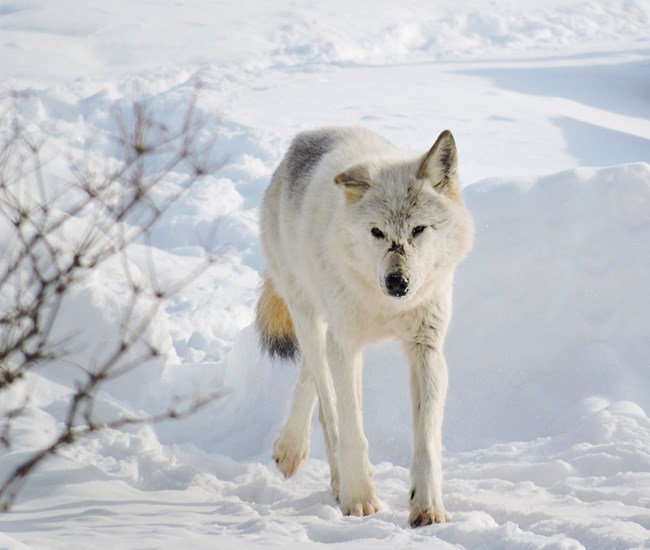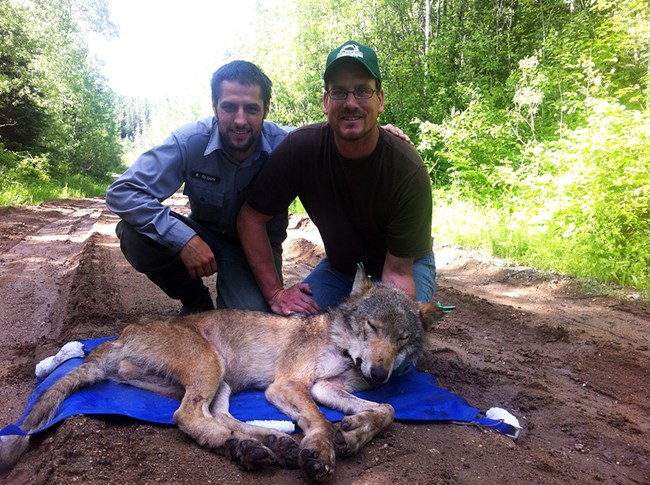
NPS 
NPS / Grunwald IntroductionWith over 120,000 acres of land, Voyageurs offers abundant forest habitat for the Gray Wolf (Canis lupus). Also called the Timber Wolf, this animal is the dominant predator in Voyageurs and primarily feeds on deer, moose, and beaver. During the winter, wolves live in family packs with approximately four to eight members, often working together to hunt large game. Park researchers are currently studying wolf behavior during the summer, when individual wolves are more likely to hunt on their own. Where can you view wolves?A wolf will often hear or smell you first and walk away, but if you are lucky enough to catch a glimpse of this mammal, keep your distance. Back up slowly, stay quiet, and give the animal space. While Voyageurs hosts a healthy population of wolves, the chances of seeing them are highest in the winter when they are hunting or moving along the shorelines of the big lakes. Wolves may also be often spotted crossing the park entrance roads. 
NPS PopulationThe wolf population in Voyageurs has stayed relatively constant since the late 1990s. The population most years varies between 30-50 wolves, split into 6 to 9 packs. Each of these pack's territory includes at least a portion of the park, with 2-3 territories generally occupying the remote Kabetogama Peninsula. StatusPrior to European settlement, wolves were abundant across the northern part of the U.S.By the 1930s, hunting, loss of habitat, and decreasing prey led to a sharp decline in the population. Minnesota retained a small population, unlike the neighboring states of Wisconsin and Michigan. In 1974, wolves were listed as federally endangered. The Minnesota wolf population has grown steadily over the past three decades.The Western Great Lakes wolf population is being considered for removal from the Federal Endangered Species List. 
NPS CharacteristicsThe gray wolf gets its name from the thick, gray fur coat covering its body. While most wolves are gray, their coats can range in color from reddish to solid black. All of these color variations have been observed in Voyageurs' wolves. On average, adults are 5-6 feet in length, with females weighing 50-85 lbs. and males weighing 70-110 lbs. Their large feet make tracks 4.5" long by 3.5" wide, which are larger than similar looking tracks made by coyotes. BreedingFemales are ready to breed by age two. However, in the hierarchy of wolves, typically only one dominant female is allowed to breed with the dominant male within the pack. Breeding occurs in February and March, with pups born in April and May. A typical litter includes 4-7 pups, which will remain in the den for the first 6-8 weeks after birth. 
NPS Gray Wolves and the FutureThe population and survival of wolves is closely linked to the availability of their prey and protection from illegal poaching. If species like White-Tailed Deer and beaver continue to be abundant in the park, there will likely be a healthy population of wolves as well. How can you protect wolves?
|
Last updated: June 10, 2021
